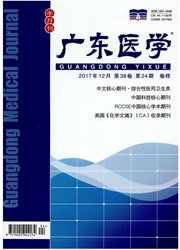

 中文摘要:
中文摘要:
目的 构建并鉴定人成纤维细胞激活蛋白(FAPα)真核表达质粒pc DNA-w FAPα(野生型FAPα)、pc DNA-t FAPα(胞外段FAPα)和pc DNA-m FAPα(缺失624~704位氨基酸的突变型FAPα)。方法 以口腔癌组织总RNA为模板,采用RT-PCR方法扩增w FAPαc DNA基因片段,连接至真核表达质粒pc DNA3.1(+)获得重组pc DNA-w FAPα质粒。以重组pc DNA-w FAPα为模板,扩增t FAPα基因片段;用overlap PCR技术,获得m FAPα基因;分别连接至pc DNA3.1(+)获得重组pc DNA-t FAPα和pc DNA-m FAPα质粒。结果 酶切鉴定和测序验证皆显示pc DNA-w FAPα、pc DNA-t FAPα和pc DNA-m FAPα为正确重组质粒。结论 成功构建人野生型FAPα(w FAPα)、胞外段FAPα(t FAPα)和突变型FAPα(m FAPα)真核表达质粒,为进一步研究FAPα在口腔鳞癌发病过程中的分子机制奠定基础。
 英文摘要:
英文摘要:
Objective To construct and identifythe eukaryotic expression plasmids containing wild -type FAPα and its mutants. Methods The wFAPα sequence and tFAPα sequence obtained by RT - PCR amplification using a high fidelity gene expression profiling strategy mediated by Pfu proofreading polymerases, were cloned into the eukaryotic ex- pression vector pcDNA3.1 ( + ). The mFAPα was obtained by overlap PCR using the pcDNA - wFAPα as template and cloned into the same vector~ Results The construction of pcDNA - wFAPα, pcDNA - tFAPot and pcDNA - mFAPα was confirmed by enzyme digestion and DNA sequencing. Conclusion The eukaryotic expression plasmids have been con- structed successfully, which: lays important foundation for the future research on the molecular mechanism of FAPα in oral squamous cell carcinoma carcinogenesis.
 同期刊论文项目
同期刊论文项目
 同项目期刊论文
同项目期刊论文
 期刊信息
期刊信息
